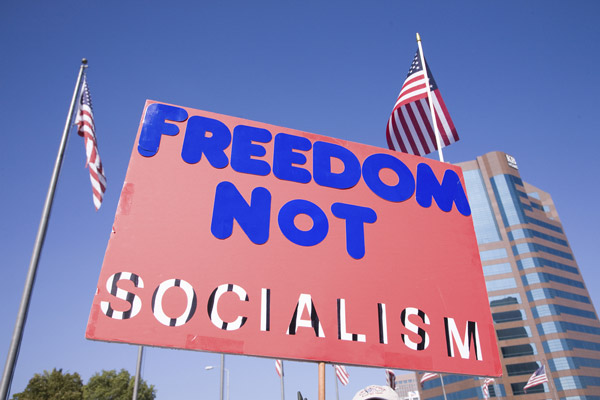A freckled boy with tousled hair looks into the camera and says, “I am NRA Country.” A black guy with dreadlocks echoes him, as do two pretty young women suppressing giggles, saying in unison, “We are NRA Country.” Then there’s country music star Justin Moore, leaning against a farm fence in worn jeans and a cowboy hat, strumming a guitar as scenes of Americana flash by. “You don’t have to look far—all you gotta do is look around,” he sings. “This is NRA Country.”
In Moore’s video, NRA Country looks like a wonderful place. The girls are pretty, the skies are blue, and people seem to spend a lot of time outdoors. But appearances aside, all is not well in NRA Country: according to the National Rifle Association, it faces existential peril in the form of Barack Obama’s possible second term.
Well before the Aurora theater shooting and the Sikh temple massacre returned guns to the political radar, the NRA adopted the poker-table slogan “All In!” for the 2012 election season. The NRA’s long-serving executive vice president, Wayne LaPierre, has dubbed the looming vote “the most dangerous election in our lifetime.” In mailings this summer, the NRA’s Political Victory Fund proclaimed that donations “could mean the difference between the survival or destruction of our Second Amendment freedoms.”
The NRA’s beef with Obama could be bad news for the president. The gun group, which grades candidates on their fidelity to the cause on a scale from A+ to F, claims an instrumental role in defeating John Kerry in 2004, Al Gore in 2000 and the Democrats’ Congressional majority in 1994. (“The NRA is the reason Republicans control the House,” Bill Clinton famously said after that election.) While some analysts believe its political power is overstated, the NRA is chiefly feared because it speaks to those voters who will cast their ballot based on the gun issue alone—a unity of purpose that gun control supporters lack.
Central to this fearsome image of the NRA is the notion that it is more than just an organization with a lot of money (it spent $244 million in 2010) and 4 million members (a minority of America’s estimated 70 million–plus gun owners)—that it is, in fact, the vanguard of America’s mainstream working-class culture. It isn’t just that President Obama and Nancy Pelosi disagree with the NRA on gun policy. It’s that their attitude on guns puts them out of step and out of touch with what real blue-collar Americans care about. As a recent headline in the NRA’s magazine asked: “Our America or Obama’s?”
But like the view through the scope of a high-powered rifle, that cultural lens magnifies one aspect of America’s gun politics to the exclusion of all else. Among other things, it obscures the fact that Obama has done little to nothing on gun policy. It glosses over the plain truth that the gun control battles of the 1990s are over and that the NRA has largely won. And most important, it ignores the fact that the gun issue is very much about money—money that the NRA banks with each new member, that the gunmakers earn with each new gun.
There is no divorcing the politics of guns from their profits. America’s gun lobby and gun industry both benefit from creating a fearful vision of life in the United States—a picture of criminals constantly menacing our families and a government hellbent on taking our guns—that is very effective at selling weapons. In fact, in large part because of the way anxieties about his gun policies have been manipulated, the Obama era has been a golden age for firearms manufacturers, and the run-up to Election 2012 could be for Glock and Remington what the Christmas shopping season is for Macy’s and Sears: a time to cash in before the narrative changes.
According to the National Shooting Sports Foundation—a trade association for the country’s gun and ammunition manufacturers, importers, wholesalers and retailers as well as its shooting ranges—the American firearms industry employed more than 98,000 people last year and generated an overall economic impact of $31.8 billion. The industry’s employment rate is up 31 percent since 2008. Firearms, says NSSF senior vice president Larry Keane, have been “a shining light in an otherwise dark and bleak economic picture.”
The boom in the firearms industry also shows up in manufacturing statistics maintained by the Bureau of Alcohol, Tobacco, Firearms and Explosives. From 2007 to 2011, the number of firearms manufactured in the United States grew by 63 percent, led by pistols, which posted a 104 percent jump.
That freshly minted arsenal translates into profits for gunmakers. Only a handful of firearms companies are publicly owned, but those that are have had good news for investors. Winchester, which makes ammunition, reported a backlog in January worth $137 million—and while 2011 wasn’t as lucrative as 2009 or ‘10, the company said it was still “the third most profitable year in at least the last two decades.” Remington sold more than 1 million guns and 2 billion rounds of ammunition in 2011. Sturm, Ruger was so overwhelmed by new business earlier this year—its gross profit jumped by 66 percent between January and June—that it imposed a brief hiatus on new orders.
Many factors—fear of crime during the economic downturn, better promotion of hunting by state wildlife agencies, more women taking up shooting, veterans returning home with a deeper attachment to guns—have likely fueled the boom in gun sales. But Obama’s influence is given singular credit. As Remington’s then-CEO, Ted Torbeck, put it in a May 2009 conference call with investors, “demand…has risen amidst concerns that the new administration will further restrict the use or purchase of firearms and ammunition and levy additional taxes on these products.”
Continue Reading at The Nation
Research assistance for this project was provided by Arielle Concilio.








